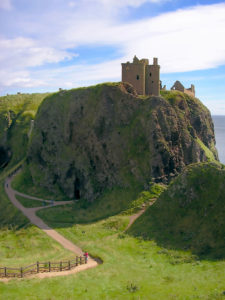Barsanti, Lord Aboyne’s Welcome
 “Lord Aboyne’s welcome” or “Cumbernauld House” appears in A Collection of Old Scots Tunes (1742) compiled and arranged with harpsichord and cello accompaniment by Francis Barsanti (born Francesco Barsanti in Tuscany). What’s an Italian doing compiling Scottish tunes?
“Lord Aboyne’s welcome” or “Cumbernauld House” appears in A Collection of Old Scots Tunes (1742) compiled and arranged with harpsichord and cello accompaniment by Francis Barsanti (born Francesco Barsanti in Tuscany). What’s an Italian doing compiling Scottish tunes?
Barsanti (1690-1775) left Italy in 1714 for London where he landed a job playing oboe and recorder in Haymarket where Handel’s operas were performed. He then obtained a post in Edinburgh in 1735, which accounts for his interest in and publication of Scottish tunes. He is also known for his sonatas for flute and concerti grossi among other works.
So what gives Scottish tunes their particular appeal? The melodies tend to be predominantly pentatonic, although they are not purely pentatonic. The pentatonic scale of course figures prominently in the music of numerous cultures, both East and West. John Glen in Early Scottish Melodies (Edinburgh 1900) rejects the idea that Scottish instruments were limited to pentatonic scales but notes that the 4th and 7th scale degrees (those not in the pentatonic scale) tended to be used as passing tones. Moreover,
Many of our Scottish tunes terminate in intervals other than their keynotes, but however uncouth such tunes may sound in the ears of those accustomed to modern or classical music, should they try to alter or attempt to make those melodies conform to the general rule, they would simply spoil the character of the airs, and make themselves ridiculous.
The “Scottish snap” also represents a distinct feature of Scottish tunes. Notes appear in short-long rhythmic pairings as opposed to the long-short pairings that we encounter more often in Western music. But in the video above, the performers have opted for more traditional ornamentation, even though Barsanti’s edition included a couple of “snaps.” Compare the version from Voices of Music (a group featured here several times). The snap is used quite sparingly, but maybe you can spot it in the first phrase.



